Table of contents
Zucchini, raw (organic?) (Cucurbita pepo) belongs to the gourd family and is very healthy. However, in exceptional cases, zucchini can be poisonous.
Use in the kitchen
Zucchini (squash, summer squash or courgette) is very versatile. Fried, grilled or raw, zucchini is a delicious side dish.
As a healthy and low-carb alternative to traditional pasta, you can make zucchini noodles using a spiral cutter. The so-called 'zoodles' taste fantastic with pesto or tomato sauce. You can find various recipes for this on our website: ' Zucchini pasta with meatless "meatballs" made from quinoa ' or ' Zucchini spaghetti with hemp pesto and almond parmesan'.
Larger, or more precisely older, zucchini are particularly suitable for use in soups or casseroles.
A tasty variation is a stuffed zucchini. You hollow out the zucchini and mix the pieces of zucchini with spices and ingredients as desired. Then you bake the stuffed zucchini in the oven - for example ' Stuffed zucchini with quinoa-tomato mixture '.
Zucchini is excellent in raw food recipes. Grated or finely chopped, it can be used to make salads. Young, small zucchini are ideal for this.
Pickled zucchini in vinegar is fantastic in sandwiches. A slightly less healthy preparation is 'zucchini antipasti': fried and pickled in oil with garlic and herbs, it makes a snack that goes particularly well with bread.
Zucchini can also be used as an ingredient in bread or cakes. Finely grated into baked goods, it adds moisture and flavor.
Vegan recipe for avocado 'zoodles'
Ingredients (2 servings): 1 zucchini (organic), 30 g fresh basil, 85 ml water, 4 tbsp pine nuts, 2 tbsp lemon juice, 1 avocado, salt andpepper
For garnish: 15 cherry tomatoes, 2 tablespoons yeast flakes
Preparation: First prepare the 'zucchini noodles' with a vegetable peeler or spiral cutter. Put the remaining ingredients in a blender (except the cherry tomatoes) and process to a cream. Finally, mix the 'zucchini noodles' with the avocado cream and serve with the halved cherry tomatoes and some nutritional yeast. The noodles taste best when fresh. However, they will also keep well in the fridge for 1-2 days.
Vegan recipes with zucchini can be found under the note: " Recipes that have the most of this ingredient ".
| Not only vegans or vegetarians should read this: Vegans often eat unhealthily. Avoidable nutritional mistakes. |
Purchasing - Storage Harvesting
begins around five weeks after planting and ends in October when the weather cools down again. This means that zucchini is in season from mid-June to October.
Most major retailers, such as Coop, Migros, Denner, Volg, Spar, Aldi, Lidl, Rewe, Edeka, Hofer, Billa, etc., sell zucchini from various countries all year round. If you prefer organic vegetables and don't want to spend a long time looking for them in the shop, we recommend shopping at an organic supermarket (e.g. Denn's Biomarkt or Alnatura). Alternatively, you can buy zucchini from regional, seasonal organic boxes.
The availability of zucchini varies depending on the size of the store, catchment area, etc. If you are interested, click on our recorded food prices for the DA-CH countries (above under the ingredient image). There you will find current prices from various supermarkets and their price development.
Storage tips
Zucchini can only be stored for a limited time. They can be kept in the refrigerator for a maximum of one week.
However, zucchini can be easily pickled in vinegar or boiled down. Zucchini can also be frozen, for example, cut into pieces and drained with a little salt.
Ingredients - Nutritional values - Calories
Zucchini has 15 kcal/100g. The macronutrients consist of 0.32 g/100g fat, 3.1 g/100g carbohydrate and 1.2 g/100g protein. 1
The most important micronutrient in zucchini is vitamin C at 18 mg/100g – comparable to honeydew melon or basil. Young, so-called baby zucchini contain particularly high levels of vitamin C (34 mg/100g). Bell peppers (184 mg/100g), kale (120 mg/100g) and herbs such as parsley (133 mg/100g) or wild garlic (150 mg/100g) have a higher vitamin C content. 1
With a potassium content of 261 mg/100g, zucchini is a healthy addition to a balanced diet. In terms of potassium content, zucchini can be compared to celery. However, much higher values can be found in dried fruits, such as apricots (1162 mg/100g), bananas (1491 mg/100g), peaches (996 mg/100g) or tomatoes (3427 mg/100g). 1
100 g of zucchini contain about 12% of the recommended daily requirement of vitamin B6 (0.16 mg/100g). Vitamin B6 (pyridoxine) can be found in higher amounts in pistachios (1.7 mg/100g) or sunflower seeds (1.3 mg/100g). 1
You can find all the ingredients of zucchini, how much it covers your daily needs and comparison values with other ingredients in our nutrient tables below the ingredient image.
Effects on health
First, something about the botanical classification, which is important in this context: The species Cucurbita pepo is extremely diverse. Generally speaking, two strands of subspecies can be identified. Firstly, Cucurbita pepo ssp. texana and Cucurbita pepo ssp. pepo. Zucchini belongs to the latter. To complicate the issue even further, there are countless cultivated varieties of the subspecies, which in turn differ greatly in their fruit. This topic can be very confusing, as clear demarcations and categorisations are often lacking. Zucchini belongs to the subspecies pepo, as do, for example, the well-known Styrian pumpkin or the classic Halloween pumpkin. 18 So they are not only the same species, they also went through a common breeding history. The last name of the botanical classification indicates the cultivated variety. The full name of one variety (of many) of zucchini is, for example, Cucurbita pepo ssp. pepo var. 'Black Zucchini' or that of the Styrian pumpkin Cucurbita pepo subsp. pepo var. styriaca. Since there are hardly any studies on the health effects of Cucurbita pepo that specifically use the word zucchini, we also list studies that "only" examined the species Cucurbita pepo :
Epidemiological studies show that the risk of developing chronic diseases, including cancer and cardiovascular disease, can potentially be reduced by consuming enough fruits and vegetables in the diet. Phytochemicals are bioactive compounds found in fruits and vegetables that protect cells from damage, i.e. help prevent disease. Zucchini also appears to have these properties. The bio-components contained in zucchini play a positive role in health, as demonstrated by their antioxidant, antimicrobial, anti-inflammatory and antiproliferative activities (inhibiting cell and tissue growth). Antiproliferative effects include, for example, that an extract from yellow zucchini is toxic to human lung cancer cell lines. 3
Researchers investigated the composition and content of bioactive components (polyunsaturated fatty acids, tocopherols and sterols) of cold-pressed oil from the seeds ( Cucurbita pepo L.) for their wound-healing properties. This study shows the importance of oil from the seeds ( Cucurbita pepo L.) as a promising agent for wound healing in animal experiments. Pumpkin seed oil is recommended for nutritional and medicinal purposes. 12 Unfortunately, there is no reference to the subspecies in this study.
An additional possible use of Cucurbita pepo is for symptoms of the lower urinary tract associated with benign prostatic hyperplasia (benign enlargement of the prostate that can make urination difficult). One study analyzed the existing literature on the subject. The scientists found 16 studies, ten of which were 'in vitro' and six clinical studies. Anti-inflammatory and anti-androgenic effects as well as a reduction in prostate growth and detrusor activity (detrusor = muscle that surrounds the bladder) can potentially improve the quality of life of affected patients. 13 This study also did not specify which cultivar was used.
The seed extract of Cucurbita pepo in combination with Equisetum arvense (field horsetail) and Linum usitatissimum (common flax) showed in a clinical study that a twelve-week treatment is effective against stress incontinence and the treatment has only minimal side effects. 14
Researchers tested an extract of the seeds of Cucurbita pepo for its effect against nematode infections. Mice infected with Heligmosomoides bakeri The extract was administered - with the result of a significant reduction in parasites. 15
Another study showed promising results regarding the anticarcinogenic potential of zucchini. Zucchini has a direct cytotoxic effect, which is enhanced by its antioxidant properties. The scientists concluded that Cucurbita pepo has the ability to significantly inhibit damage caused by H 2 O 2 and that it has antiproliferative and proapoptotic properties against HL60 tumor cells (a form of leukemia). 16
Due to the presence of mucilage, zucchini has a soothing effect on the digestive system and, as an easily digestible food, it is suitable for people with digestive problems. 4
To minimize the loss of nutrients, the thermal treatment applied should be different for each food, depending on its nature. In the case of zucchini, freezing and steaming were shown to reduce phenolic compounds and antioxidant activity. 4 Fresh young zucchini taste excellent raw and eating them raw allows you to exploit the full potential of this vegetable.
Dangers - Intolerances - Side effects
Before preparing zucchini, it is recommended to taste a small piece of raw zucchini. If it tastes bitter, the zucchini contains cucurbitacins. The cause may be a lack of water during the growth phase, or it may have been caused by crossing with an ornamental pumpkin. In this case, the zucchini is not suitable for consumption. 2 Cucurbitacins lead to poisoning. The symptoms are rapid heartbeat, drop in blood pressure, dizziness, drowsiness, dehydration, nausea, vomiting and gastrointestinal bleeding. 5 Three grams of bitter zucchini can be enough to cause symptoms of poisoning. 11
Use as a recognized medicinal plant
The following drug monographs classify Cucurbita pepo, more precisely its seeds, Cucurbitae seeds as a recognized medicinal plant: HMPC (2013), ESCOP (2009), Commission E (1991), WHO (Vol. 4). Areas of application are: for nocturnal and involuntary urination, micturition problems (painful urination, frequent bladder emptying), benign prostatic hyperplasia and irritable bladder. 17
Folk medicine - naturopathy
The Herbal Medicinal Products Committee (HMPC) classifies pumpkin seeds as a traditional herbal medicine. Based on many years of experience, pumpkin seeds can be used for urinary tract complaints associated with benign prostatic hyperplasia or an irritable bladder. 17
In traditional folk medicine, zucchini is used to treat colds and relieve pain due to its antioxidant, anti-cancer, anti-inflammatory, antiviral, antimicrobial and analgesic (pain-relieving) properties. 6
Ecological footprint - animal welfare
The ecological CO 2 footprint of zucchinis depends on various factors. For example, the type of cultivation, the country of origin and also the type of packaging. In a study on the ecological footprints of fruit and vegetables from Germany from 2020, a value of 0.2 kg CO 2 eq/kg is given. The production of 1 kg of onions or pumpkins produces similar amounts of emissions. 19 Values from the Netherlands are higher and are around 2.63 kg CO 2 eq/kg. 20 One possible reason for this increased value lies in the cultivation method, as zucchinis are often cultivated in greenhouses here. The amount of water required to produce 1 kg of these Dutch zucchinis is 125 liters. 20 For countries that are already struggling with water shortages due to climatic conditions, efficient water use is particularly important. Research is therefore being carried out into ideal growing conditions for greenhouse zucchini, for example through the use of mulch or drip irrigation. 23
Conventional agriculture often uses synthetic pesticides and herbicides, which not only have a negative impact on the environment but also pose potential health risks for people. 21 Some of these pesticides can also be found in the end product, as was also found in zucchinis. 22 When shopping, it is best to look for organically produced goods, as the use of synthetic fertilizers and pesticides is prohibited.
Worldwide distribution - cultivation
The origin of the zucchini ( Cucurbita pepo) lies in the Americas. Archaeological finds indicate two independent domestication events: one in Mexico ( C. pepo ssp. pepo) and the other in the southeastern USA ( C. pepo ssp. ovifera). The oldest archaeological remains indicate a cultural history 10,000 years old. 7
During the 16th century, Curcurbita pepo arrived in Europe along with other squash species. The classic oblong squash species, zucchini, a popular variety/subspecies of Curcurbita pepo, originated in Europe and arose as a result of a spontaneous mutation. It is believed that this occurred in Italy in the late 19th century. 8 The term 'zucchini' is the diminutive plural of the Italian word 'zucca' for pumpkin. 9
Today, the undemanding zucchini thrives in many different countries. Its versatility in preparation, mild flavor and nutritional content have made it a staple in many cuisines around the world.
Cultivation - Harvest
Zucchini is a relatively undemanding crop. Heavy soils that tend to become waterlogged and are difficult to warm up are, however, detrimental to good growth. Since zucchini is bisexual, at least two plants should be planted to ensure fertilization and regular fruit set. Direct sowing is only possible from mid-May. In commercial cultivation, it is usual to sow up to three times a year at intervals of around 4 weeks. The young plants should not be placed directly next to the older ones to prevent the transmission of diseases (mainly powdery mildew). 2
Like all pumpkins, zucchini is sensitive to frost. Zucchini stops growing at temperatures below 10 °C. Temperatures around 18–24 °C are optimal for a good yield. 2
Zucchini tolerates fresh manure and is grateful for a sufficient supply of garden compost (3-5 kg/m² per plant), as it is a heavy feeder and has a high nutrient requirement. Zucchini has the greatest nutrient requirement during the fruit growth phase. 2
Zucchini require a regular supply of water. Lack of water can stimulate the production of toxic bitter substances and often leads to deformed fruits. A layer of mulch protects the plant from excessive evaporation and suppresses competing weeds. The ideal size for harvesting the fruits is 12–25 cm. Zucchini can ideally be harvested 2–3 times a week, later in the season 1–2 times a week. 2
If you don't have a garden but have a balcony, zucchini can also be grown as a pot plant. 2
In commercial horticulture, great importance is placed on the absence of weeds. In organic farming, this means mechanical or manual control. Mulching film to suppress weeds is also common. This film has the additional advantage that the fruit does not come into contact with the moist soil, thus avoiding pressure marks. Weeds, such as shepherd's purse, and animals such as aphids can be hosts for viruses. 2
Further information
A zucchini is basically a pumpkin that has been harvested unripe. The species Cucurbita pepo is very diverse in form and includes very different cultivars (externally). It also includes the spaghetti squash and the patty pan squash. 10
Zucchini are monoecious plants. This means that they have both female and male flowers on one plant. Only the female flowers produce fruit. 2
Alternative names
Zucchini can be specified with either a feminine or masculine article (der, die). It is also called vegetable squash, summer squash or zucchetti. In English the zucchini is called 'zucchini', 'summer squash' or in British and French 'courgette'.
Bibliography - 23 Sources
| 1. | US-Amerikanische Nährwertdatenbank USDA. 2019. |
| 2. | Heistinger A. Handbuch Bio-Gemüse: Sortenvielfalt für den eigenen Garten. 7. Auflage. Innsbruck: Loewenzahn: 2020: 426-431. |
| 3. | Thanh, N.C. et al. Antioxidant, anti-inflammatory and anti-proliferative activities of green and yellow zucchini (Courgette). Applied nanoscience. 2023; 13(3):2251–2260. |
| 4. | Tejada L, Buendía-Moreno L, Villegas A, Cayuela JM, Bueno-Gavilá E, Gómez P, u. a. Nutritional and sensorial characteristics of zucchini (cucurbita pepo l.) as affected by freezing and the culinary treatment. International Journal of Food Properties. 1. Januar 2020;23(1):1825–33. |
| 5. | Jung C, Steuber B, Schwörer H. Lebensmittelvergiftung durch Cucurbitacine. Dtsch Med Wochenschr. Juli 2020;145(14):988–90. |
| 6. | Martínez-Valdivieso D, Font R, Fernández-Bedmar Z, Merinas-Amo T, Gómez P, Alonso-Moraga Á, u. a. Role of zucchini and its distinctive components in the modulation of degenerative processes: genotoxicity, anti-genotoxicity, cytotoxicity and apoptotic effects. Nutrients. 14. Juli 2017;9(7):755. |
| 7. | Castellanos-Morales G, Ruiz-Mondragón KY, Hernández-Rosales HS, Sánchez-de la Vega G, Gámez N, Aguirre-Planter E, u. a. Tracing back the origin of pumpkins (cucurbita pepo ssp. pepo l.) in Mexico. Proc R Soc B. 14. August 2019;286(1908):20191440. |
| 8. | Lim TK. Edible Medicinal And Non-Medicinal Plants: Volume 2, Fruits. Deutschland: Springer; 2012:282. |
| 9. | Paris HS. Summer squash: history, diversity, and distribution. HortTechnology. 1996;6(1): 6-13. |
| 10. | Arvay CG. Fruchtgemüse: alte Sorten und aussergewöhnliche Arten neu entdeckt. Österreich: Stocker; 2011:112-115. |
| 11. | Herrington ME. Intense bitterness in commercial zucchini. Cucurbit Genetics Cooperative. 1983;6:75-76. |
| 12. | Bardaa S, Ben Halima N, Aloui F, Ben Mansour R, Jabeur H, Bouaziz M, u. a. Oil from pumpkin (Cucurbita pepo L.) seeds: evaluation of its functional properties on wound healing in rats. Lipids Health Dis. Dezember 2016;15(1):73. |
| 13. | Damiano R, Cai T, Fornara P, Franzese CA, Leonardi R, Mirone V. The role of Cucurbita pepo in the management of patients affected by lower urinary tract symptoms due to benign prostatic hyperplasia: A narrative review. Arch Ital Urol Androl. 4. Juli 2016;88(2):136. |
| 14. | Gažová A, Valášková S, Žufková V, Castejon AM, Kyselovič J. Clinical study of effectiveness and safety of CELcomplex (R) containing Cucurbita Pepo Seed extract and Flax and Casuarina on stress urinary incontinence in women. Journal of Traditional and Complementary Medicine. April 2019;9(2):138–42. |
| 15. | Grzybek M, Kukula-Koch W, Strachecka A, Jaworska A, Phiri A, Paleolog J, u. a. Evaluation of anthelmintic activity and composition of pumpkin (Cucurbita pepo L.) seed extracts—in vitro and in vivo studies. IJMS. 1. September 2016;17(9):1456. |
| 16. | Martínez-Valdivieso D, Font R, Fernández-Bedmar Z, Merinas-Amo T, Gómez P, Alonso-Moraga Á, u. a. Role of zucchini and its distinctive components in the modulation of degenerative processes: genotoxicity, anti-genotoxicity, cytotoxicity and apoptotic effects. Nutrients. 14. Juli 2017;9(7):755. |
| 17. | Kooperation Phytopharmaka GbR. Arzneipflanzenlexikon: Kürbis.2020. |
| 18. | Paris HS, Lebeda A, Křistkova E, Andres TC, Nee MH. Parallel evolution under domestication and phenotypic differentiation of the cultivated subspecies of cucurbita pepo(Cucurbitaceae). Econ Bot. März 2012;66(1):71–90. |
| 19. | Reinhardt G, Gärtner S, Wagner T. Ökologische Fussabdrücke von Lebensmitteln und Gerichten in Deutschland. Institut für Energie- und Umweltforschung Heidelberg. 2020. |
| 20. | Foodfootprint. Climate impact CO2 Zucchini. Aufgerufen am 01.08.2023 auf https://foodfootprint.nl/en/foodprintfinder/zucchini/. |
| 21. | Asghar U, Malik MF, Javed A. Pesticide Exposure and Human Health: A Review. Journal of Ecosystem and Ecography. 2016. |
| 22. | Pesticide Action Network Europe. Forbidden Fruit. 2022. |
| 23. | Contreras JI, Alonso F, Canovas G, Baeza R. Irrigation management of greenhouse zucchini with different soil matric potential level. Agronomic and environmental effects. Agricultural Water Management. 2017; 26-34. |

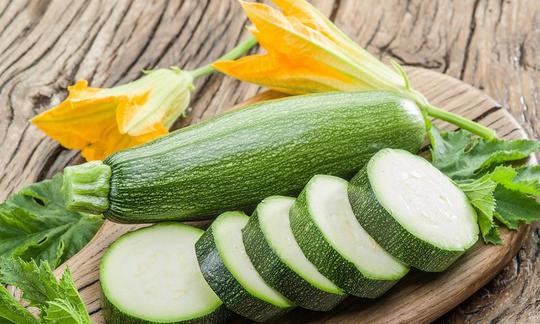

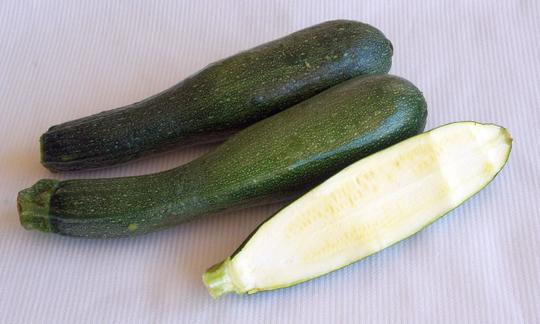

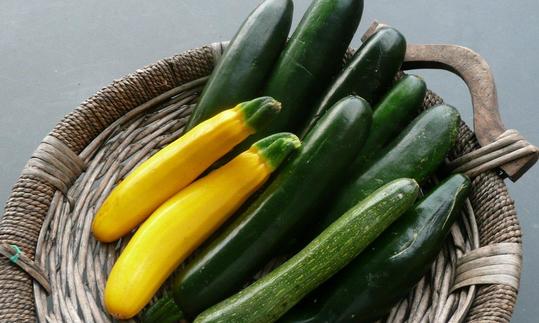

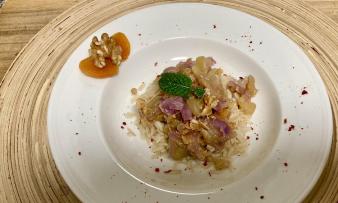
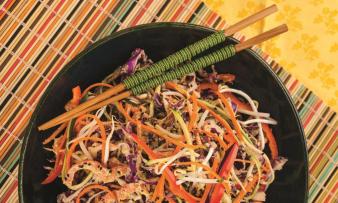






Comments